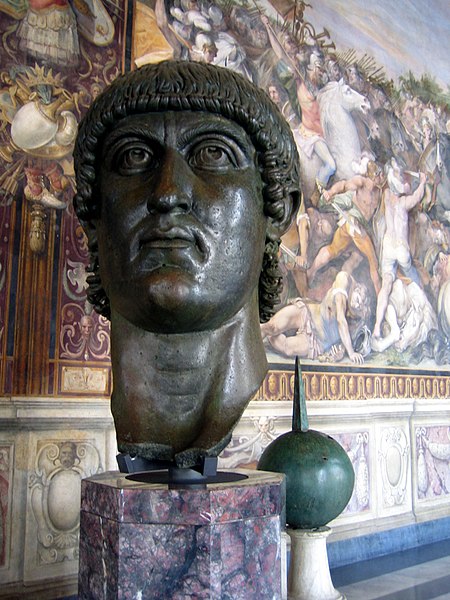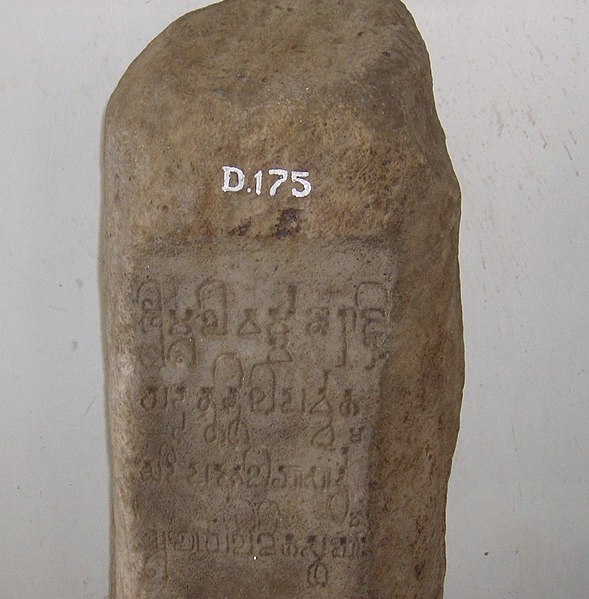The 4th century was the time period from AD 301 to AD 400 (CD) in accordance with the Julian calendar. In the West, the early part of the century was shaped by Constantine the Great, who became the first Roman emperor to adopt Christianity. Gaining sole reign of the empire, he is also noted for re-establishing a single imperial capital, choosing the site of ancient Byzantium in 330 to build the city soon called Nova Roma ; it was later renamed Constantinople in his honor.
Eastern Hemisphere at the beginning of the 4th century CE.
Eastern Hemisphere at the end of the 4th century CE.
Contemporary bronze head of Constantine I (r. 306–337 AD)
Tikal had a population of about 100,000 when it was conquered by Teotihuacan, less than a fourth of its peak population
Kutai is a historical region in what is now known as East Kalimantan, Indonesia on the island of Borneo and is also the name of the native ethnic group of the region, numbering around 300,000 who have their own language known as the Kutainese language which accompanies their own rich history. Today, the name is preserved in the names of three regencies in East Kalimantan province which are the Kutai Kartanegara Regency, the West Kutai Regency and the East Kutai Regency with the major river flowing in the heart of the region known as the Mahakam River. Kutai is known to be the place of the first and oldest Hindu kingdom to exist in East Indies Archipelago, the Kutai Martadipura Kingdom which was later succeeded by the Muslim Kutai Kartanegara Sultanate.
An ancient yūpa of Mulawarman, king of Kutai
A yūpa with inscription in the National Museum of Indonesia in Jakarta
The Lesong Batu stone located in Muara Kaman district, the remnants of the Kutai Martadipura kingdom
The golden crown of Kutai Sultan, part of the regalia of Kutai Kartanegara Sultanate. Collection of the National Museum of Indonesia, Jakarta.








